Blade
A blade is the flat, elongated, and typically narrow portion of an object, such as a knife, sword, or fan. It is designed for cutting, slicing, or striking. Blades are commonly made of metal, but can also be made of other materials such as stone, obsidian, or ceramic. They are a fundamental tool used in various applications including cooking, construction, and recreation.
Types of Blades
There are various types of blades, each designed for specific purposes:
- Kitchen Knife Blade: Used for cutting and preparing food.
- Sword Blade: Found in various styles and designs for combat or ceremonial use.
- Razor Blade: Used for shaving and personal grooming.
- Saw Blade: Designed for cutting through wood, metal, or other materials.
- Fan Blade: Found in fans and turbines to move air or fluids.
Functions of Blades
Blades serve several functions based on their design and application:
- Cutting: Blades are used to cut through materials by applying force along their edge.
- Slicing: They can be used to create thin, precise cuts in various substances.
- Striking: Some blades, such as those on axes or machetes, are designed for striking or chopping.
- Propulsion: In the case of fan blades, they are used to generate airflow and movement.
Study Guide
Here are some key points to remember about blades:
- Identify different types of blades and their specific uses.
- Understand the materials used in making blades and their properties.
- Explain the functions of blades in various tools and equipment.
- Discuss safety measures and proper handling of blades.
- Explore the historical and cultural significance of blades in human civilization.
By understanding the role and significance of blades, you can appreciate their diverse applications and the impact they have on our daily lives.
.◂Science Worksheets and Study Guides Second Grade. Mammals and birds
Study Guide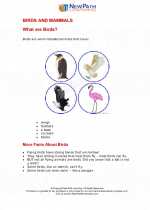 Mammals and birds
Mammals and birds  Activity Lesson
Activity Lesson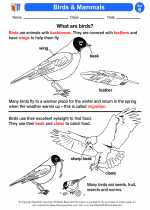 Birds & Mammals
Birds & Mammals  Worksheet/Answer key
Worksheet/Answer key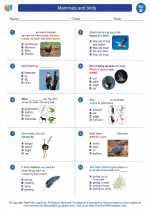 Mammals and birds
Mammals and birds  Worksheet/Answer key
Worksheet/Answer key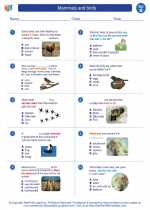 Mammals and birds
Mammals and birds  Worksheet/Answer key
Worksheet/Answer key Mammals and birds
Mammals and birds  Worksheet/Answer key
Worksheet/Answer key Mammals and birds
Mammals and birds  Vocabulary/Answer key
Vocabulary/Answer key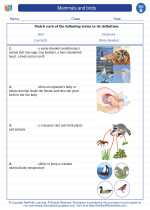 Mammals and birds
Mammals and birds 

 Activity Lesson
Activity Lesson
 Worksheet/Answer key
Worksheet/Answer key
 Worksheet/Answer key
Worksheet/Answer key
 Worksheet/Answer key
Worksheet/Answer key
 Worksheet/Answer key
Worksheet/Answer key
 Vocabulary/Answer key
Vocabulary/Answer key

The resources above cover the following skills:
LIFE SCIENCE (NGSS)
Biological Evolution: Unity and Diversity
Students who demonstrate understanding can:
Make observations of plants and animals to compare the diversity of life in different habitats[Clarification Statement: Emphasis is on the diversity of living things in each of a variety of different habitats.] [Assessment Boundary: Assessment does not include specific animal and plant names in specific habitats.]